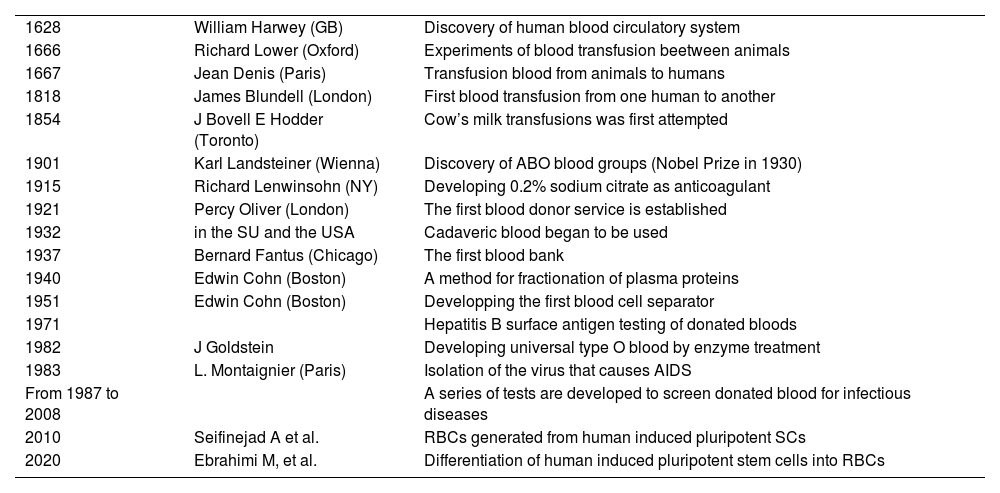
It is not easy to cover the history of transfusion in all its aspects. In the era when blood transfusion was first tried, the indications for blood transfusion were also very different: mental illness, gaining strength, rejuvenation, etc. Blood transfusion process has gone through many dangerous and difficult stages, from obtaining the blood to its safe application in peace, in war, and in the laboratory. This presentation focuses on some stages and developments in the application of blood transfusion. The main developments are summarized in Table 1. The main problems encountered in the history of transfusion can be summarized as follows:
- Blood clotting and preservation could be prevented by the use of 0.2% sodium citrate and dextrose.
- Severe transfusion reactions could mostly be prevented after the ABO blood groups were identified.
- Infection problems that could be partially controlled with antiseptic agents.
In this presentation, various obstacles encountered in the history of blood transfusion and developments regarding their solutions are presented.
Table 1 Important stages in the history of blood transfusion.
SU, Soviet Union; USA, United States of America; RBCs, Red Blood Cells; SCs, Stem Cells.







